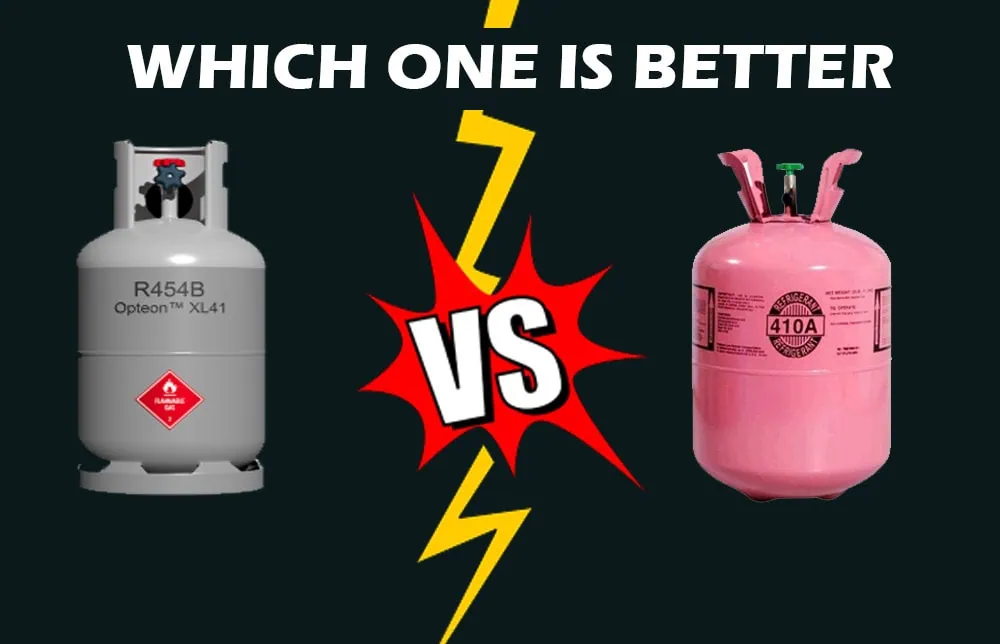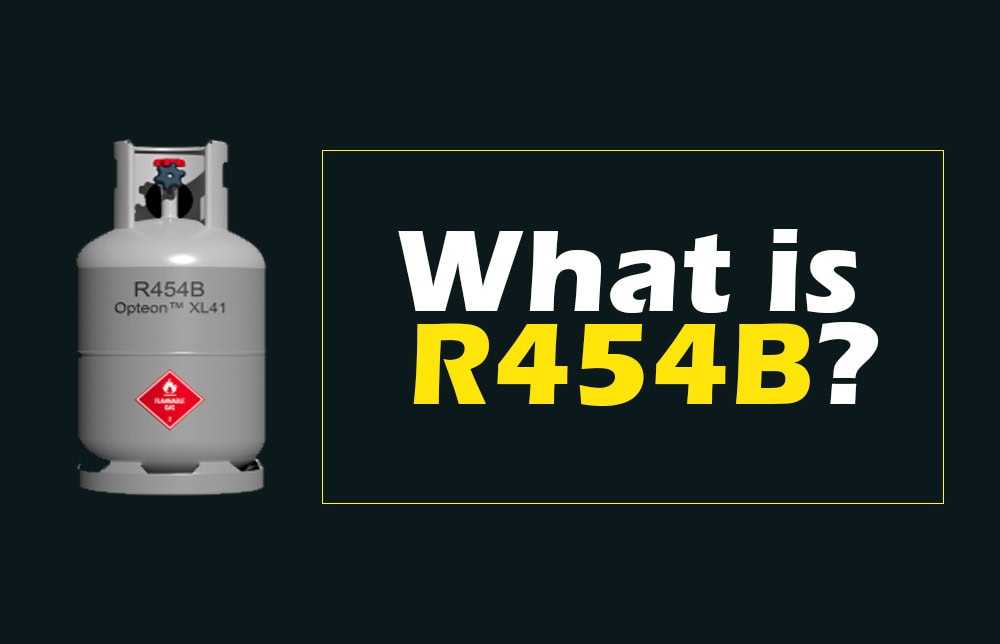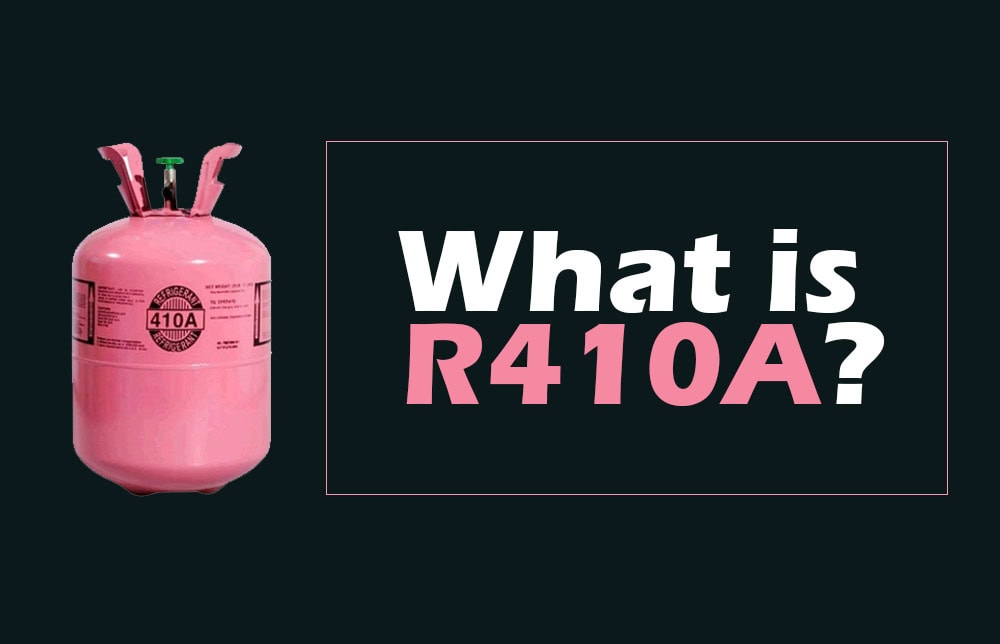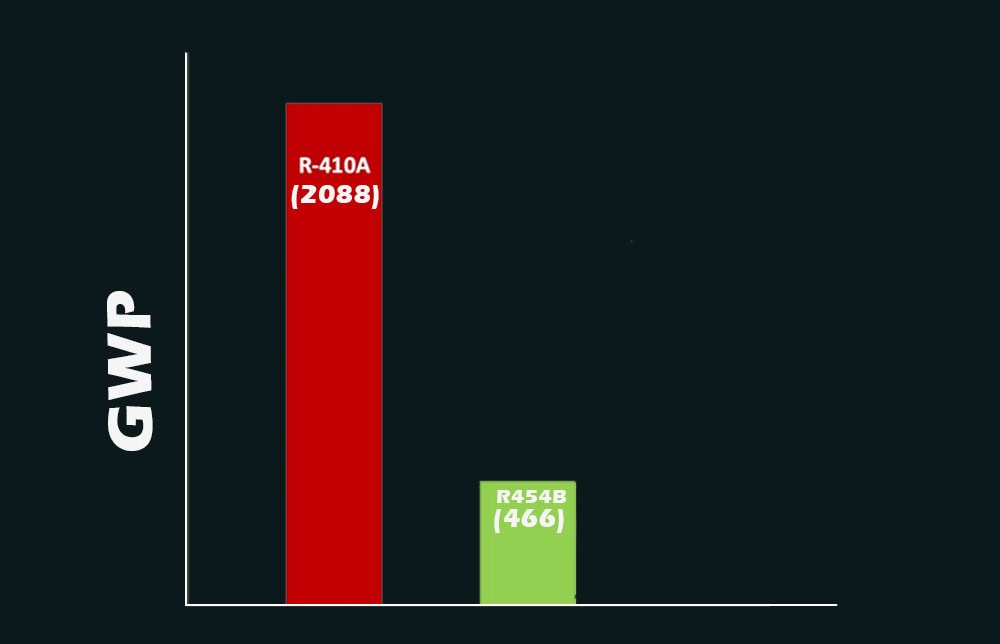Intro
R454B is considered to be one of the refrigerants that will take over from R410A after its completely phased out by 2025. However, one question we see a lot in many forums nowadays is:
R454B Vs R410: Which one is better in terms of energy efficiency, safety, cost, and environmentally friendliness?
Our team of experts compared the two refrigerants. We found several similarities and differences that we’d like to discuss in this article. Here’s our in-depth analysis of R454B vs R410A.
R454B vs R410A: Which One is Better?

Both R454B and R410A have individual strengths and weaknesses like any other refrigerant you’d find in the market.
If you are wondering what refrigerant to choose, here’s our summarized finding:
When it comes to energy efficiency, cooling efficiency, and environmentally friendliness, R454B seems to be a better option to R410A. However, R410A is safer to use since it’s not flammable in ambient temperatures and atmospheric pressures while R454B is mildly flammable in similar conditions.
From 2025, we might never see R410A again. So, R454B would become the most ideal replacement of the refrigerant.
Let’s do a brief introduction of both refrigerants before we can explain why this is the case.
Brief Introduction to R454B and R410A
What is R454B?

Also known as XL41 or formerly known as DL-5A, R454B is a HFO refrigerant manufactured by Chemours, as an environmentally friendly replacement of R410A. The refrigerant is a blend consisting of 68.9% of R32 (HFC refrigerant) and 31.1% of R1234YF (HFO refrigerant).
R454B is set to replace the HFC refrigerant in several applications including:
- Residential and commercial air conditioning
- Heat pumps and chillers
- Positive displacement units
For more information on R454B, read our fact and info sheet here.
What is R410A?

R410A is a popular HFC refrigerant that comprises of two components: 50% of R32 and 50% of R125 (both of which are HFC refrigerants). The refrigerant (invented by Honeywell in 1991) came into existence to replace R22 ( a HCFC refrigerant), a refrigerant that was being phased out because of its ozone depletion potential (0.055).
Note: It’s good to note, though, that R410A has a higher GWP than R22, which was one of the factors leading to its current state of phaseout.
R410A is useful in:
- Residential and commercial AC systems
- Industrial refrigeration
- Centrifugal compressors
- Chillers
For more information on R410A, read our fact info sheet here.
R454B Vs R410A: Do They Have Similarities?
Probably yes! One of the reasons why R454B is a good R410A replacement is because both carry similar features. These include:
- Both have a zero ozone depletion potential value. This is obvious since both don’t have chlorine like R22 and other CFC and HCFCs
- Both refrigerants are refrigerant blends, consisting of two components each. You can also expect a temperature glide from both refrigerants
- R32 is a common component in both refrigerants
- Both are commonly found and used in residential and commercial air conditioning, chillers, and heat pumps
R454B Vs R410A: What Sets Both Apart?
Since R454B is set to take over in most R410A applications, the question most people have in their minds is: What can you expect from R454B?
Obviously, from a chemical perspective, you can expect several differences. For instance, both don’t belong to the same class of refrigerants. R454B is a HFO refrigerant while R410A is a HFC refrigerant.
When differentiating the two, we’ll consider four aspects. That includes: environmentally friendliness, safety, performance, and energy efficiency.
1. R454B Vs R410A: Which Is More Friendlier to the Environment?

For this one, I’d definitely vouch for R454B.
Although both refrigerants have zero ozone depletion potential, R410A may not be a good long-term option because of its high global warming potential (GWP).
R410A has a high GWP value of 2088. It’s also good to note that R410A has a higher GWP than R22, the refrigerant it replaces. R454B, on the other hand, has a GWP of 466, which is a value that is 5 times less than that of R410A.
That said: R454B is the best option when it comes to environmentally friendliness. The negative impact the refrigerant has on the environment is significantly low, making it a long term potential replacement for R410A.
2. Which Refrigerant is Safer to Use?
According to the Environment Protection Agency, an ideal refrigerant should be non-toxic, non-flammable, stable within a system, easily available, environmentally benign, easy to handle and detect.
The problem is: It’s difficult to find a refrigerant with all these qualities. However, I believe with time, we’ll get there.
Both the R454B and R410A are safe to use. They are both non-toxic and stable inside any refrigeration system. Also, when handled by an expert, you can expect both to be safe to use.
However, R454B seems to be mildly flammable if exposed to atmospheric pressure. It has a A2L ASHRAE classification. R410A is not flammable under normal conditions, which makes it safer to use and less reactive, in case of an accident.
3. R454B vs. R410A: Performance Comparison
On top of getting a refrigerant with a low GWP, R454B seems to be the most balanced R410A replacement we have in the market. One of the reason this is the case: It performance better.
Various studies show this. For instance, in a study to investigate the Comparative Performance of Low Global Warming Potential (GWP) Refrigerants as Replacement for R-410A, scientists found that the COP (Coefficient of Performance) of R454B was higher than that of R410A.
Here’s a graphic representation from the report.

From the image, you can see that the COP of R454B is slightly higher in different operating temperatures.
4. Which Refrigerant is Energy Efficient?
When you use a refrigerant that performs well, this means that you’ll end up with an energy efficient refrigerant. Hence:
- You don’t have to charge the system with a lot of refrigerant
- The refrigeration system will require less energy to transfer heat
- The system’s components (specifically the evaporator and condenser) will be stable and distribute heat evenly throughout the system
- Running and maintaining the system will be cost-friendly as the unit doesn’t consume a lot of electricity to cool a space
Since R454B performs better than R410A, it’s a more energy efficient refrigerant. You’ll need a lesser R454B charge within a system than when using R410A. This lowers the cost of running a system with the refrigerant.
Is R454B a Drop-in Replacement for R410A
You need to make several modifications to the R410A system if you want to replace it with R454B. Hence, R454B is not a drop-in placement for R410A.
Here are some of the reasons why this is the case:
- R410A operates at higher pressures than R454B. This makes the compressor and the condenser less able to work with a low pressure refrigerant
- The components used to manufacture systems that use R410A are not suitable for flammable refrigerants. You have to replace them first with components that can work with such refrigerants before charging R454B into the system
Wrapping it Up
That’s it guys!We have come to the end of the R454B vs R410A blog post. So, if you have been looking for the perfect R410A replacement, R454B would be the most ideal option in this case. It’s environmentally friendly, cost-friendly, available, energy efficient, and safe to use.